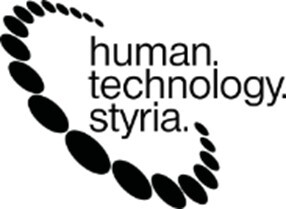Bluetooth Low Energy (BLE) and RFID differ significantly for real-time patient data transmission in HealthTech, each with distinct strengths and limitations.
Here the Characteristics
Bluetooth Low Energy (BLE):
Designed for continuous, real-time transmission of patient physiological data from wearable devices (e.g., fitness trackers, glucose monitors) to smartphones, tablets, or dedicated gateways, making it ideal for patient monitoring.
Provides low power consumption allowing extended device battery life critical for continuous monitoring.
Operates at 2.4 GHz with a typical range up to about 10 meters indoors, suitable for room-level tracking and direct device-to-smartphone connections without extra infrastructure.
BLE signals also enable approximate location tracking within clinical settings, with accuracy around 3 meters, useful for patient movement and location monitoring.
BLE gateways and readers are generally cheaper and easier to deploy than active RFID, facilitating cost-effective scaling.
RFID:
Typically used for instant patient identification, asset tracking, and supply chain management by reading data from RFID tags embedded in patient wristbands or equipment without the need for line-of-sight.
Ultra-High Frequency (UHF) RFID can provide real-time location data but usually requires a dense reader infrastructure to increase coverage and accuracy due to short read ranges for passive tags and higher cost for active tags.
Passive RFID is very cost-effective for identification but is less suited for continuous real-time physiological data transmission because of its lower data rates and shorter effective range.
Active RFID can transmit location continuously but at a much higher infrastructure and device cost compared to BLE systems, making large scale deployments more expensive.
Key Comparison for Real-Time Patient Data:
| Feature | Bluetooth Low Energy (BLE) | RFID |
| Primary Use | Continuous physiological data streaming, patient monitoring, device-to-smartphone communication | Patient identification, asset tracking, event-based data capture |
| Real-time Data Suitability | Excellent for continuous, real-time data transfer | Limited; mostly event-triggered or location updates |
| Power Consumption | Very low; enables wearable long battery life | Passive tags: no power, active tags: higher power |
| Range | ~10 meters (indoors) | Passive: centimeters to a few meters, Active: up to ~100 meters but costly |
| Infrastructure Cost | Lower cost gateways/readers; leverages existing smartphones | Higher cost, especially for active RFID readers and infrastructure |
| Integration & Ecosystem | Broad smartphone and tablet compatibility | Specialized readers required |
| Location Accuracy | ~3 meters (room-level) | Varies, often zone level; better with dense reader deployment |
| Use Case in HealthTech | Wearables, continuous patient monitoring, location tracking | Patient wristbands for ID, asset tracking, supply chain |
Summary:
For real-time physiological patient data transmission (e.g., vital signs, continuous monitoring), BLE is superior due to its ability to continuously stream data to smartphones or gateways with low power consumption and lower deployment cost.
For identification and event-based tracking, RFID excels, providing instant patient ID and asset tracking capabilities that improve workflow and safety, but generally is not used for continuous real-time physiological data streaming.
Many healthcare systems combine both technologies to leverage RFID for identification and inventory management and BLE for real-time health monitoring and device connectivity, creating a complementary ecosystem that improves care and operational efficiency.
Thus, while RFID is ideal for patient identification and asset/event tracking, Bluetooth Low Energy is better suited for real-time, continuous patient health data transmission in HealthTech applications.
Sources
https://kontakt.io/blog/real-time-location-system-rtls-study-how-do-rfid-and-ble-differ
https://www.tagnos.com/rtls-in-healthcare-comparing-real-time-location-systems












